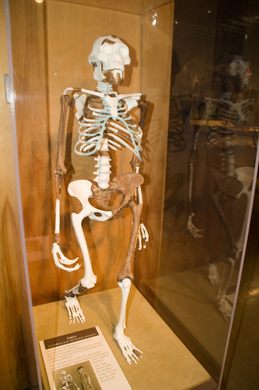AO Edited
Hadar Archaeological Site
The skeletal remains of the famous hominid "Lucy" were found at this spot.
On November 24, 1974, paleoanthropologist Donald Johanson spotted something odd poking out from a dry gully within the archeological site around Hadar, Ethiopia. There, a thin arm bone was visible against the dry, dusty earth. Johanson kept looking and soon found additional skeletal remains—a femur here, some ribs there—scattered nearby.
By the end of the excavation, Johanson and his colleagues had unearthed about 40 percent of a roughly 3.2 million-year-old skeleton. These bits of bone were the only pieces they could work with while puzzling together the identity of “Lucy,” the now world-famous hominid. Though officially named AL 288-1, Lucy was given her more popular moniker as a nod to the Beatles song that was played repeatedly during the camp’s celebrations honoring her discovery.
By studying her remains, the researchers were eventually able to determine that Lucy is a member of the Australopithecus afarensis species, a hominid that went extinct about 2.9 million years ago. After reading the clues hidden in the fragments of her skeleton, they also concluded that the ancient female walked upright and died when she was only a young adult.
Lucy’s skeleton wasn’t the only hominid unearthed at Hadar. The fossilized skull of Selam, a three-year-old hominid that died about 3.3 million years ago, was discovered during a later dig. Other hominid remains have been found spread throughout the sedimentary rocks as well.
















Follow us on Twitter to get the latest on the world's hidden wonders.
Like us on Facebook to get the latest on the world's hidden wonders.
Follow us on Twitter Like us on Facebook